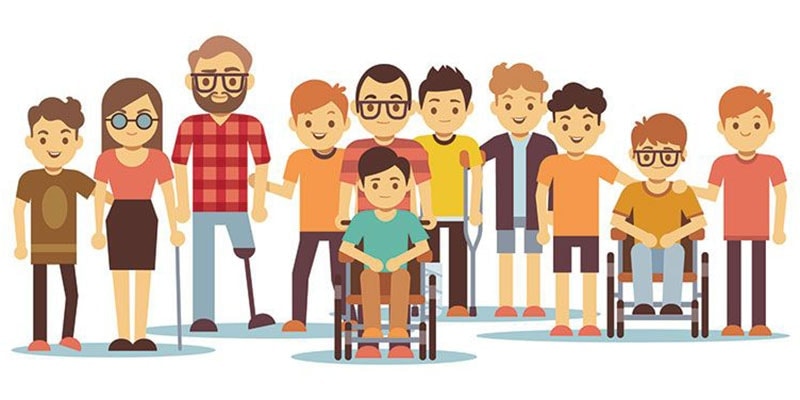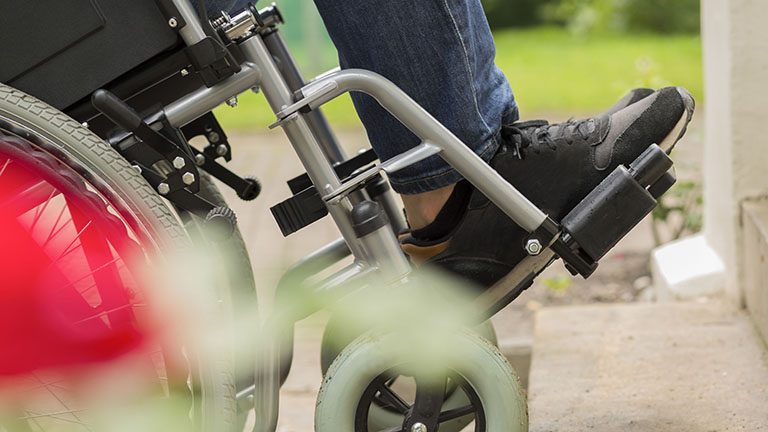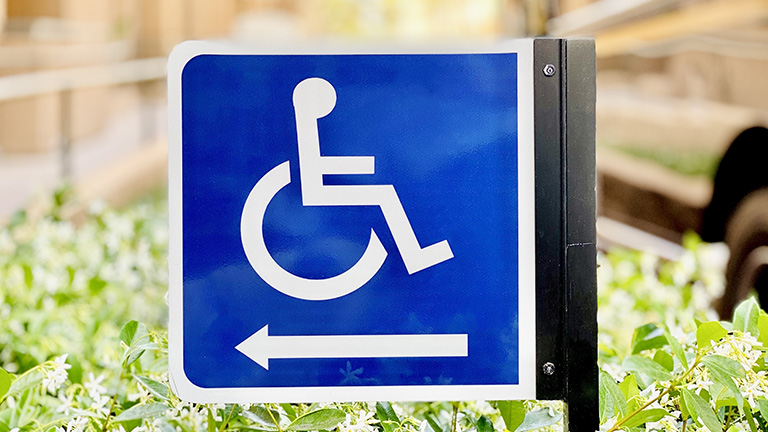In 2006, the American Psychological Association (APA) reported that the U.S. had a disabled population of 40 million, two-thirds of which were of working age and desired to work. According to a 2015 report from the Center for Disease Control (CDC), the number of disabled persons in the U.S. had increased to 53 million, or roughly 1 in 5 people. That being said, studies and reports consistently show that many of these individuals are still regularly being denied opportunities in education. The following 5 concepts are critical for reversing this trend and increasing inclusive education.
1. Changing Mindsets: Isn’t Inclusion Still Associated with Children with Special Needs?
Students with special needs are often associated with individuals having severe disabilities who are unable to keep the educational pace with those living without such disabilities. However, this is often not the case. Although some students may live with severe cognitive impairments, most students have conditions that vary widely, from mobility issues (the most common functional disability type as reported by the CDC) to anxiety problems and allergies. These conditions generally do not severely impact a student’s ability to progress academically.
Noting this wide variability, the United Nations Educational, Scientific and Cultural Organization (UNESCO) says it is unnecessary to isolate special needs students. Doing so only creates an exclusionary environment, which both marginalizes individuals as well as hinders educational opportunities that could otherwise lead into future employment options;
Too often the result has been exclusion – second-rate educational opportunities that do not guarantee the possibility to continue studying. But there is increasing recognition that it is better for children with special needs to attend regular schools, albeit with various forms of special support.
Furthermore, inclusive education can actually counteract the marginalization and exclusion caused by disabilities; “Integrating children with disabilities into the standard education system can break down the segregation that reinforces stereotypes. Moreover, special schools are often chronically underfunded and lack either skilled teaching staff or the equipment needed to deliver a good education.”
2. The Effect: Can Inclusive Education Really Promote Successful Learning?
According to a report by the Maryland Coalition for Inclusive Education (MCIE), disabled students are often less engaged in class instruction and less likely to receive personal assistance when separated from general education classes into special education programs.
General education classrooms delivered more instruction…addressed content more, and used non-disabled peers more and adults less… Students with severe disabilities were 13 times more likely than their peers without disabilities to receive instruction directed exclusively toward them during whole class activities, and were 23 times more likely to receive 1:1 instruction.
The report goes on to declare, “This challenges the prevalent notion that students with disabilities cannot receive individualized support in general education classrooms.”
It is worth noting that inclusive education programs also show significant benefits for students without disabilities. According to the same MCIE report, 60.7 percent of students without disabilities demonstrated progress in mathematics when enrolled in inclusive programs, compared to 37.5 percent of students who made progress in traditional schools. In addition, the report goes on to state that positive outcomes are not limited to academics alone. Rather, out of the 11,000 students polled in inclusive education programs, the report shows a decline in school absences, fewer disruptive behavior incidents, and better outcomes after high school in the areas of employment and independent living.
3. The Path Forward: How Does Inclusive Education Work in the Classroom?
According to both the Global Campaign for Education (GCE) and the MCIE, implementing a fully inclusive education system takes large policy changes, funding, leadership, and the appropriate education of teachers. However, it is the more direct, hands-on approach that can be seen to give relevance to the whole notion of inclusive education. According to the MCIE, two fundamental approaches have been shown to demonstrate large gains in the educational advancement of students in inclusive education programs: Peer Tutoring & Mentoring and Instructional & Curriculum Adaptation.
Peer Tutoring & Mentoring
- In a report titled, “Inclusive Education Research & Practice,” the MCIE states, “The use of peer-mediated strategies results in improved academic outcomes for all students including those considered at-risk academically.” Furthermore, “Results showed increases in spelling accuracy as well as greater levels of engagement with typical peers and a decrease in competing behaviors when compared to teacher-led instruction.”
Instruction & Curriculum Adaptation
- In the same report, the MCIE shows large academic gains experienced in classrooms employing “specialized” adaptations, such as graphic organizers, self-regulation strategies, semantic maps, text book supplements, as well as inquiry based approaches to academic studies. In some cases, entire class averages have shown academic gains of 10 percentage points. The report states, “…strategy instruction (teaching students how to learn) has been shown to improve academic achievement across grade levels for both students with and without disabilities.”
4. Long Term Effects: How Inclusive Education Impacts Employment?
The Kessler Foundation, a public charity assisting the disabled, cites Dr. John O’Neill, its Director of Vocational Research and co-author of the 2015 study, “Individual Characteristics and the Disability Employment Gap,” as saying “Our study revealed variations in outcomes that provide insight into factors that favor employment…For example, the employment gap declines as educational attainment increases.”
According to Dr. O’Neill’s study, which was published in the Journal of Disability Policy Studies, educational attainment does more than narrow the employment gap for people living with disabilities; it brings the gap into close comparison with those of people living without disabilities. “With a few exceptions, the differences in employment by age, gender, education, and other personal characteristics are similar for those with and without disabilities.”
However, the study is careful to clarify that such variables are not necessarily directly related; “For non-fixed characteristics like education and marital status, differences between people with and without disabilities may reflect both differences in disability prevalence and differences in opportunities or choices.” The article continues, stating that the same consideration must be given when comparing education completion rates,
The same ambiguity in interpretation should be kept in mind when noting that people with disabilities have lower educational attainment than do people without disabilities. A substantially smaller share of people with disabilities have a graduate or professional degree (4% vs. 12%) or a bachelor’s degree (9% vs.21%) as their highest level of educational attainment. A greater percentage of people with disabilities have not graduated from high school (23% vs. 11% of nondisabled people).
Incidentally, other organizations, such as the GCE, also declare that the limited educational opportunities experienced by those living with disabilities are often the first step in a cycle leading to fewer opportunities throughout a lifetime. According to the GCE, “In particular, education can play a powerful role in either reducing or embedding poverty… Children with a disability are more likely to experience exclusion from education, which leads to a greater chance of being in poverty in later life.”
5. Getting it Done: How can we Implement Inclusive Education?
The GCE cites seven key strategies as a method for creating inclusive education programs:
- Create appropriate legislative frameworks and set out ambitious national plans for inclusion;
- Provide the capacity, resources, and leadership to implement ambitious national plans on inclusion;
- Improve data on disability and education, and build accountability for action;
- Make schools and classrooms accessible and relevant for all;
- Ensure there are enough appropriately trained teachers for all;
- Challenge attitudes which reinforce and sustain discrimination; and
- Create an enabling environment to support inclusive education, including thorough cross-cultural policies and strategies that reduce exclusion.
The GCE states that these strategies must be supported in order to achieve a society free from marginalization and to provide educational and employment opportunities to the disabled.
The estimated 1 billion people who live with a disability – comprising approximately 15% of the global population – face a multitude of barriers to participating equally in society. In particular, their right to education is often not realized, which in turn hinders their access to other rights and creates enormous obstacles in reaching their potential and effectively participating in their communities.
Furthermore, the GCE is not alone in making such statements. UNESCO has developed its own set of guidelines, stating
The overall goal is to ensure that school is a place where all children participate and are treated equally. This involves a change in how we think about education. Inclusive education is an approach that looks into how to transform education systems in order to respond to the diversity of learners. It means enhancing the quality of education by improving the effectiveness of teachers, promoting learning-centered methodologies, developing appropriate textbooks and learning materials and ensuring that schools are safe and healthy for all children. Strengthening links with the community is also vital: relationship between teachers, students, parents and society at large are crucial for developing inclusive learning environments.



